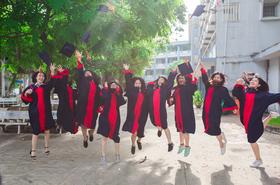- Central Oregon Community College is a public community college in Bend, Oregon. It primarily serves residents of Deschutes, Jefferson, and Crook Counties. Its service district also includes portions of Klamath, Lake, and Wasco counties.
School Highlights
Central Oregon Community College serves 6,759 students (27% of students are full-time).
The college's student-teacher ratio of 40:1 is higher than the state community college average of 21:1.
Minority enrollment is 43% of the student body (majority Hispanic), which is less than the state average of 47%.
Quick Facts (2025-26)
- Enrollment: 6,759 students
- In-state tuition: $121
- Out-state tuition: $357
- Acceptance Rate: 100%
- Student-teacher ratio: 40:1
- Minority enrollment: 43%
- Source: Verified school update
Top Rankings
Central Oregon Community College ranks among the top 20% of public schools in Oregon for:
Category
Attribute
Community Size
School Overview
The teacher population of 168 teachers has declined by 57% over five years.
Central Oregon Community College
(OR) Community College Avg.
Carnegie Classification
Associate's Colleges: High Transfer-Mixed Traditional/Nontraditional
Not applicable, not in Carnegie universe (not accredited or nondegree-granting)
Institution Level
At least 2 but less than 4 years
At least 2 but less than 4 years
Institution Control
Public
Private not-for-profit
Total Faculty
168 staff
192 staff
Number of Programs Offered
98
44
School Calendar
Student Body
The student population of Central Oregon Community College has grown by 40% over five years.
The student-teacher ratio of 40:1 has increased from 12:1 over five years.
The Central Oregon Community College diversity score of 0.60 is less than the state average of 0.66. The school's diversity has grown by 23% over five years.
Total Enrollment
6,759 students
2,463 students
Student-Teacher Ratio
40:1
21:1
# Full-Time Students
1,839 students
310 students
# Part-Time Students
4,920 students
2,153 students
# Enrollment Undergraduate
675 students
339 students
# Full-Time Undergraduate Students
1,839 students
310 students
# Full-Time Graduate Students
n/a
193 students
# Part-Time Undergraduate Students
4,920 students
2,589 students
# Part-Time Graduate Students
n/a
153 students
Total Dormitory Capacity
330 students
270 students
% American Indian/Alaskan
2%
1%
% Asian
1%
5%
% Hispanic
15%
20%
% Black
1%
3%
% White
57%
53%
% Hawaiian
n/a
1%
% Two or more races
4%
5%
% Non Resident races
n/a
1%
% Unknown races
20%
11%
Diversity Score
0.60
0.66
College Completion Rate (Students who graduate in less than 4 years)
22%
42%
College Completion Rate (Students who graduate in 4 years or more than 4 years)
n/a
58%
Average Graduate Earnings (10 Years)
$34,700
$33,800
Tuition and Acceptance Rate
The public in-state tuition of $121 is less than the state average of $4,172. The in-state tuition has declined by 98% over four years.
The public out-state tuition of $357 is less than the state average of $6,738. The out-state tuition has declined by 97% over four years.
In-State Tuition Fees
$121
$4,172
Out-State Tuition Fees
$357
$6,738
% Students Receiving Some Financial Aid
79%
79%
Median Debt for Graduates
$12,412
$12,875
Median Debt for Dropouts
$6,334
$6,334
Acceptance Rate
100%
100%
Extracurriculars
Total ExtracurricularsTotal Extra-curric.
21 extracurriculars
ExtracurricularsExtra-curric.
Club or Organization:
Recreational Athletic Programs:
Afrocentric Studies ClubArt Club
Asian Cultures ClubCommunity Health Club
CRU LifelinesCulinary Arts Club
Dance ClubDreamers Club
First Nations Student UnionGaming Club
German ClubJewish Students Club
Latinx ClubLGBTQ & Friends Club
Live Action SocietyMen's Baseball Club Team
Nursing ClubSki & Snowboard Club
Theorian SocietyVet Tech Club
Recreational Athletic Programs:
Co-ed Intramural Indoor Soccer
Source: 2024 (or latest year available) Integrated Postsecondary Education Data System (IPEDS) , School Administrators
Frequently Asked Questions
How much does Central Oregon Community College cost?
Central Oregon Community College's tuition is approximately $121 for In-State students and $357 for Out-State students.
What is the acceptance rate of Central Oregon Community College?
The acceptance rate of Central Oregon Community College is 100%, which is equal to the state average of 100%.
What is Central Oregon Community College's ranking?
Central Oregon Community College ranks among the top 20% of community college in Oregon for: Largest student body.
In what neighborhood is Central Oregon Community College located?
Central Oregon Community College is located in the River West neighborhood of Bend, OR.
Recent Articles

The Rise of Technical and Vocational Training in 2025
Explore the 2025 surge in technical and vocational training—enrollment, policy, costs, and why this path is gaining ground for students and parents.

Stackable Credentials: How Community Colleges Advance Careers
Discover how community colleges use stackable credentials to build career pathways, boost earnings, and enable lifelong learning in 2025.

High-Paying Jobs You Can Get with a Community College Degree
Discover top high-paying careers you can launch in 2025 with a community college (associate) degree and high-growth credentials in tech, healthcare and trades.










